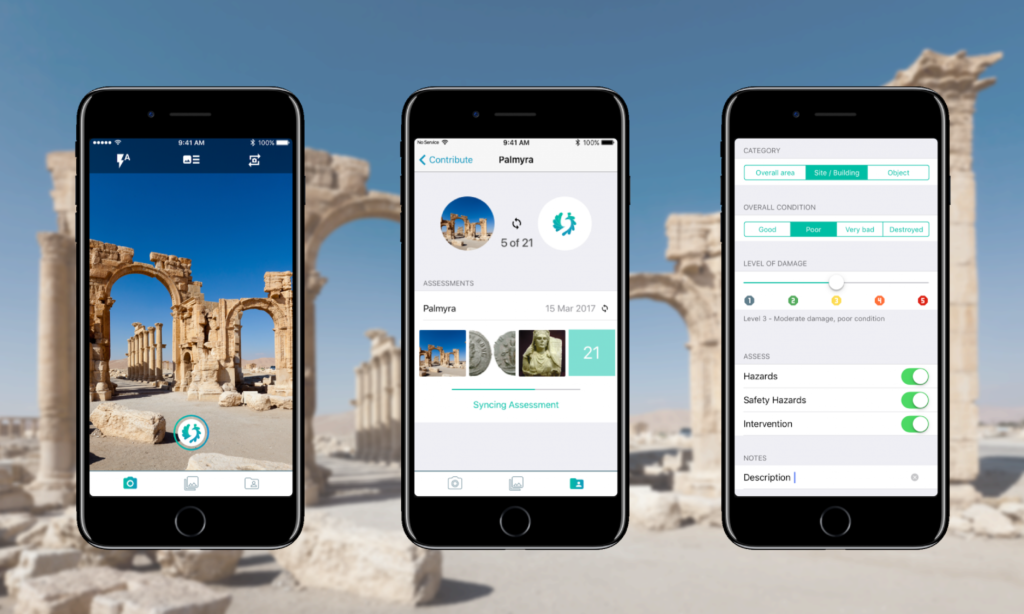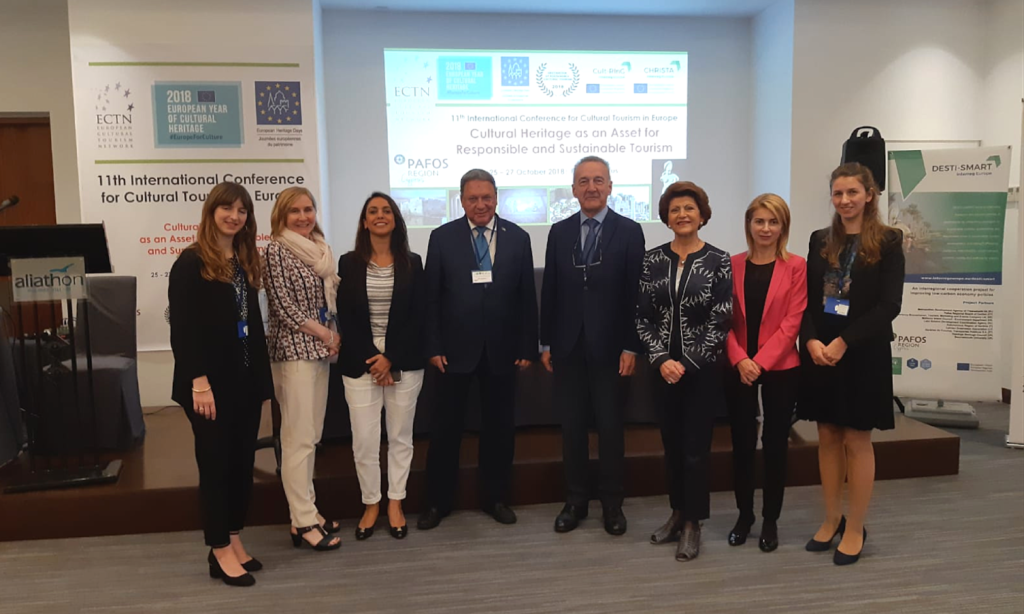Global Heritage Fund was recently invited to present at two conferences supporting heritage protection and documentation, the Capacity Building Days on the 5th Anniversary of the “7 Most Endangered Programme” (Nicosia Conference, October 22 – 24) and International Conference on Digital Heritage (EuroMed2018, Oct 29 – Nov 3).
Global Heritage Fund was honored to present at the recent Capacity Building Days on the 5th Anniversary of the “7 Most Endangered Programme,” organized by the Centre for Visual Arts and Research (CVAR) and Europa Nostra, one of the leading organizations promoting European cultural heritage. Conference participants from around the world debated the future of the “7 Most Endangered” program, the program by Europa Nostra to identify the most threatened historic monuments and sites in Europe. Along with partners such as UNESCO and the Council of Europe, Europa Nostra has been instrumental in raising awareness about shared European cultural heritage and protecting historic sites throughout the region. We were excited to present at the Capacity Building Days, where experts from around the world gathered to discuss heritage protection and management.
During October 22 – 24, this year’s conference discussed the importance of effective heritage partnerships and organizational collaboration with a focus on Nicosia’s buffer zone. Nada Hosking, GHF’s Director of Programs and Partnerships, presented on the importance of transformational partnerships in the heritage sector for long-term sustainability of conservation projects and effective heritage preservation. Using examples from our Sagalassos partnership with KU Leuven and Collective Granaries project in Morocco, Nada emphasized how strong institutional partnerships are crucial to developing large project scopes. Her presentations demonstrated how the fight for heritage preservation is fundamentally a communal endeavor, and local communities are also vital for the sustainability of our projects. Transactional partnerships that ignore local people, communities, and organizations, are destined to fail no matter how hard they try or how well funded they might be.

Europa Nostra, European Investment Bank Institute, and GHF visit the Buffer Zone in Nicosia
Nada proposed that in a globalized world, with multiple actors and a diffusion of power and resources, the heritage field must look beyond state actors to create effective partnerships for change, and she suggested that the heritage sector should focus on partnerships that define successes more broadly than financial returns and programmatic outcomes. She reiterated the goal of GHF, which is to develop integrated partnerships that emphasize transformation over transaction, and we were delighted that Nada was invited to present at the Europa Nostra Conference in Nicosia alongside other international organizations and stakeholders committed to heritage protection.
While in Nicosia, Nada and other conference participants were able to visit the Nicosia Buffer Zone. Created in 1974, the Buffer Zone cuts through the historic center, dividing the local communities and painfully intruding on both architecture and regional history. During their visit, conference participants learned how the Buffer Zone disrupts community life and has inspired the Nicosia Master Plan Project for future unification of the two major local communities, Greek Cypriots and Turkish Cypriots. The Nicosia Master Plan works towards preservation of the historic region and future community development. By empowering the local communities to reclaim their own heritage for economic improvement and development, it embodies the core of GHF’s philosophy.
Global Heritage Fund was also invited to present at the International Conference on Digital Heritage (EuroMed2018) held October 29 – November 3. In cooperation with organizations including UNESCO, ICOMOS, The Getty Cultural Institute, The Smithsonian Institute, Europa Nostra, and the Cyprus University of Technology, the conference focused on digital documentation and protection of heritage sites and assets. EuroMed2018 was an important gathering of stakeholders committed to improving heritage protection through digital tools such as the Virtual Multimodal Museum (VIMM). Bringing together the world’s leading organizations working on virtual museums, VIMM is an exciting development and one of many innovative new programs working to better document and protect cultural heritage collections and endangered sites.
As a keynote speaker at EuroMed2018, Nada discussed the development of AMAL in Heritage, the program GHF is developing to create a digital documentation tool for emergency management of cultural heritage and heritage first responders. Although many organizations are already leading programs that enable cultural responders to be integrated in overall humanitarian response efforts, these programs are not accessible to everyone. In partnership with institutions such as the Arab Regional Center for World Heritage, the Risk Preparedness Committee of ICOMOS ICORP, and ICCROM, we are developing AMAL as a digital documentation solution for the logistical problems of rapid response heritage protection and documentation.

Learn more about Amal in Heritage
Global Heritage Fund also attended the 11th International Conference for Cultural Tourism in Europe held October 25 – 27 in Pafos, Cyprus. Aligned with our recent projects, the conference emphasized sustainable tourism as an important factor in community development and heritage protection. Here at GHF, we recognize that cultural tourism managed through responsible visitor plans can help build new pathways to prosperity for communities in developing regions of the world. We were delighted to join other heritage practitioners and tourism experts at the conference exploring how tourism can play a vital role in the protection and economic development of historic areas.

Anne Grady, European Commission DG for Education and Culture; Nada Hosking, Global Heritage Fund; Manos Vougioukas, ECTN Secretary-General; Piet Jaspaert, Vice-President of Europa Nostra; Androula Vassiliou, Former European Commissioner for Culture and Vice-President of Europa Nostra
In the fight for heritage documentation and protection, our unique methodology emphasizes community inclusion and sustainable partnerships. We recognize that heritage is a vital aspect of local development and resilience, helping communities around the world create new economic opportunities and recover from crises. Thanks to our partners and supporters, our global programs are developing sustainable projects to help communities protect their endangered historic sites and traditions. Thank you for supporting our mission.

